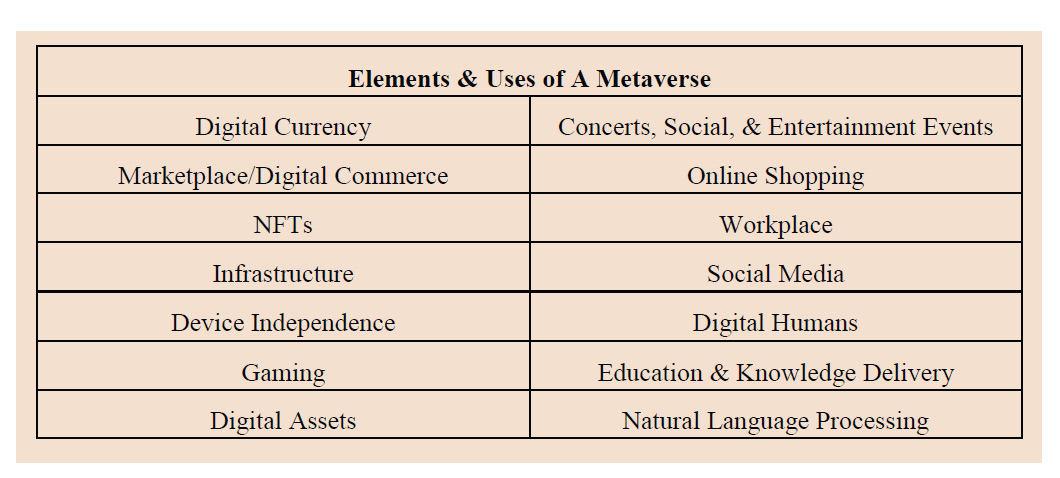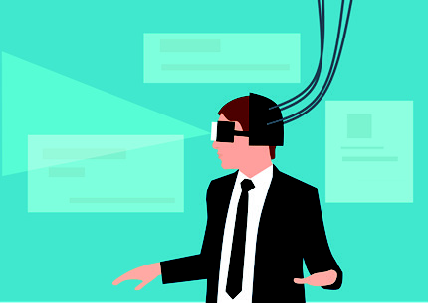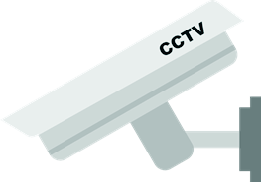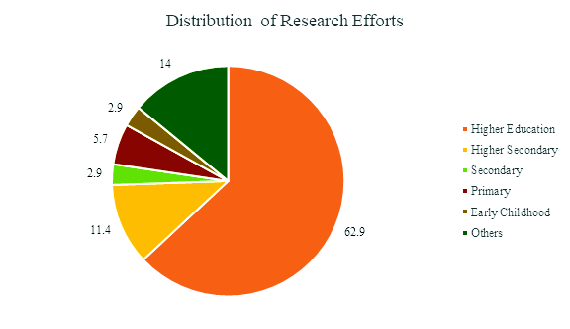Abstract
The rise of the new t echnological frontier, the Metaverse, has raised questions about how digital interactions will change. Especially, in the field of education. This research explores the impact that Metaverse can have on educational systems and pedagogy. Its goal is to investigate and understand the makeup of the Metaverse in addition to its implications and future. In that context, the study follows the key concepts and features of the Metaverse and finds significant benefits for the educational sector. Furthermore, it also notes the risks and impacts the technology can have on the users and the institutions. The research further looks into educational levels and fields of study that are currently inclined toward the Metaverse. Unsurpris-ingly, the STEM fields and Higher Education sector currently lead the research and develoment of the Metaverse for education in tandem with corporations alike. Ultimately, the paper evaluates the impact of the metaverse and advocates for a safe, secure, and sustainable digital infrastructure for education.
Introduction
The word ‘Metaverse’ has been in the headlines across industries for a variety of reasons in 2022 (Economic Times, 2022). The rise of the new technological frontier has also raised questions about how digital interactions will change. This paper explores the known and potential impacts of the Metaverse on teaching methodologies and their effect on educational regimes. Something as significant as the Metaverse, especially given high corporate investment, is bound to affect the digital aspects of various industries (Udin, 2022). With the EdTech revolution during the pandemic, the way schools operate even after reopening has drastically changed (Shanbaug, 2021). It appears to be a natural extension that EdTech companies and educational institutions will adopt the Metaverse. This paper explores the possibilities of education within the Metaverse along with the leading opinions of experts and an analysis of market data. The research also seeks to explore if Metaverse-led education would become a part of mainstream educational practices.
Methodology
This paper follows an exploratory style of study into the impact that Metaverse can have on educational systems. Its goal is only to investigate the key questions and not to provide definitive and conclusive solutions to current problems. This research seeks to increase the understanding of the issue rather than offering conclusive evidence of a market trend or impact of technology.
The research takes a qualitative, open-ended approach to understanding the impact of futuristic technology. To explore the aforementioned topics, the study relies on the viewpoints of experts and literary works from various sources. The research focuses on three key questions –
- What are the key features and risks of the Metaverse that could impact the learning of the students?
- What kind of changes in learning/teaching styles can be expected?
- Who will be most impacted by a potential change and how?
Banking on the aforemen-tioned questions, a series of themes, literature types, sub-questions, and experts were brought in. Given its open-ended and flexible nature, the research was an interpretive one and the results are as detailed in the next section.
Results and Discussion
The first part of the research focused on understanding the Metaverse itself and what it contains such that it can be of impact on the educational system. The Metaverse is the internet equivalent of 3D virtual worlds. Similar to how the internet is an aggregation of websites, the Metaverse is the aggregation of 3D virtual worlds that aim to mimic the physical world using digital technologies (Laukkonen, 2022). However, in popular culture, the Metaverse refers to an individual virtual world or a virtual space with 3d/digital objects (Cosdec Alpha Ltd, 2022). If it were to be understood in a simpler sense – the Metaverse provides a virtual space where various digital objects and human-represented avatars can interact

Furthermore, the Metaverse also presents a variety of other features that can be used in the context of learning practices. The key features are as follows:
Immersive
One of the major attractions of the Metaverse is its immersive attribute. The ability to experience spaces in 3D and with a frame of reference inside the space opens doors for various pedagogical innovations (Kumar, 2022).
Digital Human Avatars
The Metaverse allows users to create their human-like digital avatars within a specific virtual space. This not only enables users to mimic human movements but also interact with other digitized humans creating collaboration opportunities (XpertVR, 2022).
Visualization
Given that the Metaverse is three-dimensional and immersive in nature, it presents a substantial opportunity for visual supremacy. Educational institutions can leverage these fundamentals to provide an unprecedented visual aid in addition to knowledge content. Especially, in fields like healthcare that require complex procedures, the Metaverse can help provide highly visual and immersive training (Miller, 2022). Such a feature not only opens doors in complex fields but also for the younger population who respond well to visual learning.

Physical Security
Often a concern for parents is the physical security of students – while in school and travelling (Brenan, 2019). Metaverse being a completely digital platform ensures that children are safe and within a recognized, secure perimeter. It not only reassures worried parents but also promotes healthier emotional states in students.
Privacy
The Metaverse, at the current time, is mostly built on the blockchain – a decentralized, immutable ledger of information. Blockchain brings a high degree of transparency and privacy to the users of virtual worlds that constitute the Metaverse (Scientific Web Solutions, 2022). Users can not only control their data but also manage their identities effectively.
Scalability
Educational infrastructure has been constrained by the capacity of the physical space it occupies. Whereas, in the Metaverse, a million students can occupy the same space and consume the same content without any interruptions (Epps, 2022). In other words, it offers great scalability to regular educational operations.
Hybrid Learning Support
The Covid-19 pandemic forced educational institutions to opt for virtual learning systems and as lockdowns were lifted, the transition to hybrid learning was made (Shanbaug,2021). To date, a lot of institutions are leveraging the hybrid model and the Metaverse sets up the stage to facilitate such interactions. It can ensure that the students in the physical and digital infrastructure can learn together and achieve similar educational outcomes.

Moreover, as the Metaverse promises improved educational outcomes, it also possesses certain risks to those who impart & consumer knowledge. Some of the challenges of the Metaverse include harassment and cyberbullying of staff and students, theft of identity /data, cyber attacks on infrastructure and connected devices, ex-higher risk of posure to negative social engineering, or changing/unreal perceptions of (Boda, reality 2022). These risks can be gated but tutions need mitiinstito take advanced, pre-emptive measures to ensure the safety of their patrons. Moving on, an area of significant focus remains the change in existing paradigms of learning and interaction.
Educational Regimes across the world have started to build on the Metaverse and there are certain realized and certain projected impacts. The virtual recreation of the real world has been presenting new opportunities to teach and learn (Tripathi, 2022). The most significant impacts of the Metaverse are as follows:
Learning & Collaboration
The Metaverse allows for learning and collaboration at a mass scale within a virtual campus that mimics a large educational institution (Jagannathan, 2022). It provides new areas for students to explore and connect over as well as fosters innovation.

Without Spatial Barriers
Metaverse also removes spatial barriers. No matter where you are as a learner, you can tap into the immersive world for any learning purpose. Most of the time, students and teachers around the world can control and navigate the same content and elements without spoiling it for others. Meaning when they came back the next day and find that the elements are intact (Ragav, Noen, Lindahl, & Dohler, 2022).
Improved Accessibility
Devoid of physical requirements, the Metaverse allows people with disabilities and special needs to access the same content as the rest of their peers (Jagannathan, 2022). It not only helps them thrive in the same environment as others but also allows for educational institutions to instil sound diversity and inclusion practices.
Increase Performance
Given its digital nature, the Metaverse can aid in capturing richer and higher learning data (Jagannathan, 2022). This data, coupled with other intelligence technologies like AI, can prove significant in analysing student performance and generating insights. Continuous insights and feedback can increase student performance.
In addition, the Metaverse can also influence impacts in other areas of educational practices and pedagogy. It can aid in better interpersonal skill build ing, conflict management, cross-cultural knowledge, and experiential learning. While these impact areas paint a positive picture, the most significant stakeholders of impact remain to be identified.
It is highly complex and debatable to identify the stakeholders who will be impacted the most by the Metaverse but trends are starting to shape. A key determinant of the impact of the Metaverse is the investment in understanding and developing such technologies. Data suggests that there is a significant investment by higher education institutions in exploring the Metaverse. As visible from the graphic below, higher education research accounted for about 63% of the overall research inclination (Tlili, et al., 2022). It was followed by Higher Secondary (11.4%) and Primary Education (5.9%). As it appears, there is a low research inclination towards early childhood education or special education. These areas are vital in the research approach going forward and critical to the development and widespread adoption of the technology.

Source: Tlili, et al., 2022.
Further data suggest that the educational field with the potential to be impacted the most by the Metaverse is the STEM field. Research efforts have peaked in the field of Natural Sciences, Mathematics and Engineering – accounting for 53% of the total. It is then followed by General Education (15%), Arts & Humanities (11%), Business & Law (9%), Social Science (6%) and Aircraft Mainte-nance (6%) (Tlili, et al., 2022).
Overall, the research and trends suggest that the STEM fields at the Higher Education level will stand to gain the most from the implementation of the Metaverse and have already begun researchefforts to develop sustainable advantages using futuristic technologies.
Conclusion
A study of information reveals the emergence of the Metaverse as a new frontier for educational innovation and knowledge deployment. The Metaverse as a whole has variable virtual spaces, each with different characteristics. Therefore, it is highly abstruse to conclude which end of the ethical and righteousness spectrum the Metaverse sits on. However, one can effectively look at the individual use case of virtual worlds, in education or otherwise, and understand its impact as well as the future.
Furthermore, on the domain level, Metaverse does provide discernible benefits to education regimes and pedagogies. Leveraging its core features, institutions can create great impact while also pioneering long-due changes in the status quo. However, it is also vital to note that the Metaverse poses security, physical, and psychological risks for its users. It needs to be dealt with utmost attention to detail and integrity – something that is expected of future developments and innovation.
With STEM fields and the Higher Education sector leading the research and innovation of Metaverse for Education, it can be expected that the development of technology itself will be rapid. Despite technological growth and hype, other sectors of the education field appear to be lacking in awareness and exposure to the Metaverse. Therefore, it can be expected that the widespread adoption of technology in education is still a distant reality.
Ultimately, as with all technologies, the Metaverse also brings pros and cons with itself subject to its usage and awareness of the user. The path forward would require that research and experimentations continue in the context of Metaverse for Education. Overall, the need is to build a safe, secure, and sustainable digital infrastructure for students and teachers to thrive in. Perhaps, that is what the future holds for the Metaverse.
References
- Boda, R. (2022, August 16). 10 Metaverse Risks To Watch Out For. Retrieved from IRM India:https://www.theirmin-dia.org/blog/10-metaverse-risks-to-watch-out-for/
- Brenan, M. (2019, August 27). Parents’ Concern About School Safety Remains Elevated. Retrieved from Gallup News: https://news.gal-lup.com/poll/265868/parents-con-cern-school-safety-remains-elevate d.aspx
- Cosdec Alpha Ltd. (2022). Web 3.0 for Dummies. London: Cosdec Alpha.
- Economic Times. (2022). Metaverse News. Retrieved from Economic Times: https://economictimes.indi-atimes.com/topic/metaverse
- Epps, R. (2022, February 01). A Metaverse of Wonder: The Future of Internet Scalability or a Market-ing Buzzword for the Ages? Retrieved from Tech Times: https://www.techtimes.com/arti-cles/271285/20220201/metaverse-w onder-future-internet-scalability-m arketing-buzzword-ages.htm
- Gupta, A. (2022, January 28). What is A Metaverse? Retrieved from Gartner: https://www.gart-ner.com/en/arti-cles/what-is-a-metaverse
- Jagannathan, S. (2022). Education Meets the Metaverse: Reimagining the Future of Learning. Retrieved from World Bank: https://olc.worldbank.org/about-olc/educa-tion-meets-the-metaverse-reimag-ining-the-future-of-learning
- Kumar, S. (2022, May 02). Metaverse: An Immersive, Digital Alternative to the Physical World. Retrieved from TCS: https://ww-w.tcs.com/blogs/metaverse-tech-nology-immersive-digital-world
- Laukkonen, J. (2022, August 26). What is the Metaverse? Retrieved from Lifewire: https://www.life-wire.com/what-is-the-metaverse-6 260309
- Miller, A. (2022, August 15). Are Metaverse Applications Becoming a Reality in Medical Training? Retrieved from Medical Device Network: https://www.medicalde-vice-network.com/analy-sis/are-metaverse-applications-becoming-a-reality-in-medical-training/
- Ragav, A., Noen, K., Lindahl, M., & Dohler, M. (2022, August 17). Metaverse Education: From Univer-sity to Metaversity. Retrieved from Erricson: https://www.erics-son.com/en/blog/2022/8/metaverse-educa-tion-from-university-to-metaversity
- Scientific Web Solutions. (2022, February 21). What is Metaverse? Features, Technology, Uses, and Benefits. Retrieved from LinkedIn: https://www.linkedin.com/-pulse/what-metaverse-fea-tures-technology-uses-benefits-web-solu-tions/?trk=articles_directory
- Shanbaug, A. (2021, November 22). Why School EdTech will Dominate in a Post Pandemic World. Retrieved from Economic Times: https://economictimes.india-times.com/industry/services/educa-tion/why-school-edtech-will-dominate-in-a-post-pandemic-world/articleshow/87853030.cms
- Tlili, A., Huang, R., Shehata, B., Liu, D., Zhao, J., & al., e. (2022, July 06). Is Metaverse in education a blessing or a curse: a combined content and bibliometric analysis. Smart Learning Environments, 9(24), 31. doi:https://-doi.org/10.1186/s40561-022-00205-x
- Tripathi, N. (2022, June 15). What Will Learning in the Metaverse Look Like? Retrieved from Forbes India: https://www.forbesin-dia.com/article/take-one-big-sto-ry-of-the-day/what-will-learning-in-the-metaverse-look-like/77285/1
- Udin, E. (2022, September 29). Metaverse Investments Far Exceeds iPhone, Android & Driver-less Cars. Retrieved from Giz China: https://www.gizchi-na.com/2022/09/29/metaverse-in-vest-ment-far-exceeds-iphone-android-driverless-cars/
- XpertVR. (2022). What is A Digital Avatar? Retrieved from XpertVR: https://xpertvr.ca/what-is-a-digital-avatar/
DOI
https://doi.org/10.57259/GRJ6136
Research Objectives
The research aims to explore the impact of Metaverse technology in the context of pedagogy and educational institutions. Additionally, identify and understand areas of impact within the education sector.
Bio

Pratibha Mishra is an education strategist currently serving as the Principal of Panbai International School, Mumbai, and a consultant to various educa-tional organizations. She is on a mission to empower those who impart and consume knowledge. In her career spanning over 20 years, she has been associ-ated with many institutional reforms, especially in adopting new educational paradigms.



